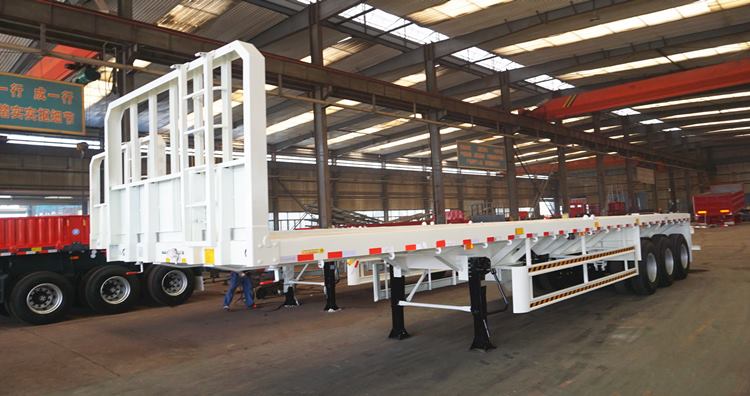Because the driver must fix and drag heavy objects and uniquely shaped loads, flatbed trucks are one of the types of truck driving that are quite difficult. However, many of the things you hear about flatbed transportation are incorrect, or you may not have considered it. Flatbed trailer transportation may make a lot of sense, and the skill requirements for it are constantly increasing. Here are 7 myths about flatbed truck transportation and the truth behind them.

Misunderstanding 1: The income is not high.
Truth: Compared to many other types of trucking, flatbed trucking companies always pay drivers more per mile. This is because the work is challenging, so flat carriers can charge more for their services. Compared with the driving position of dry van and temperature control, the extra salary for extra work (such as tarp) can bring a significant income difference in a year's time.
Misunderstanding 2: It takes time to load, unloading and checking the load consumes money.
Truth: Flatbed trailers are generally less loaded and unloaded than dry vans in a given period of time, and loading/unloading is generally faster. In most cases, the driver does not have to return to the dock because the trailer is usually unloaded from the side. In addition, some carriers pay drivers for the time they are detained at the shipper or consignee.

Misunderstanding 3: Drivers need a lot of training.
The truth: Compared with many other professions, it takes almost a long time to become a professional. The key is to find a company that provides strong, high-quality training so that you can learn to conduct training correctly and safely.
Although this helps to gain driving experience, many drivers start their careers with flatbed trailers. You must learn how to securely fix the load and how to handle the equipment. The weight and unique load shape require a more serious driver. You will also receive training on all appropriate regulations regarding flatbed driving. You need professional skills developed through training and experience that will provide you with a competitive advantage in your career.
Misunderstanding 4: Load protection is difficult.
Truth: As a flatbed truck driver, fixing the load correctly is one of your main responsibilities-it is a heavy responsibility. If you do not do well, you will put yourself and the motorists at risk. If you are properly trained and follow the proper procedures and use the tools and equipment provided, you will be successful and will become very routine over time.

Misunderstanding 5: The physical and mental work involved in properly fixing loads and tarps is always a drawback.
The truth: Many flatbed trailer drivers say that it is precisely because of these challenges that they choose this type of truck transportation. Some people say that manual labor is a welcome supplement to driving. Given the well-known health hazards associated with sedentary sitting, the opportunity to move and exercise at work provides more benefits than the opportunity to break the monotony. Others like the science involved in safely transporting flatbed trucks.
"I really want to know how many chains and adhesives have to be calculated to successfully prevent the 42,000 pounds of steel from sliding forward into the back of the cab challenge," I wrote in a host for Trucking magazine. The truth forum. "Not only is it more labor; it also enables you to understand the physical principles involved and the work load limits of the equipment you are dealing with."
When looking at the mirror and seeing a stable load or a tight tarp without a loose end flapping, many drivers feel satisfied and satisfied. Flatbed truck drivers say they are proud of their work and how it is shown to everyone.

Misunderstanding 6: Women’s work is too hard.
Truth: Flatbed trailers are a physically demanding job that does not appeal to everyone, but like other types of trucks, women are entering the driver’s seat at frequent paces. Women can (and can do) flatbed carts, and for many years they have been single.
Misunderstanding 7: It is always dangerous.
The truth: Statistically speaking, flatbed hauling is a more dangerous way of trucking, but it doesn’t have to be so for any particular individual. The driver can control the workload through training, careful operation and common sense to ensure work safety. In addition, with proper rest and concentration, the driver can be more alert and understand the load and road conditions. It is important to cooperate with a company that provides you with the appropriate tools and training, and believes in the importance of adequate rest and alertness.
Through the video below, you can learn about different types of flatbed semi trailers (like tri axle trailer for sale, flatbed trailer manufacturers, flatbed trailer for sale, flatbed trailer for sale, 40ft container trailer price, 40 ft flatbed trailer, flatbed semi trailer, flatbed semi trailer manufacturers, 40 foot flatbed trailer for sale)
And the process, testing, packaging and customer feedback, etc.
Welcome to click “Technical“, you can get more article about our trailers.
Click “Product“, you can find your favorite semi trailer.